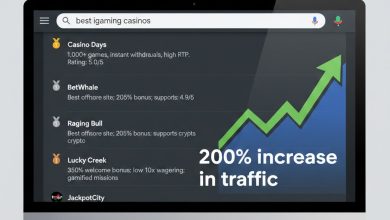Part II: Best practices and opportunities
In the previous post, we described the main blockers that are preventing businesses from a successful adoption of AI. We identified and analyzed these five areas: vision and commitment from executive teams and boards, organizational culture and change management, data readiness, talent, and, finally, standards and regulation.
It is time now to focus on how to overcome these barriers, identifying best practices and opportunities from the experience of successful AI adopters. They are a great inspiration for companies looking to accelerate AI adoption within their organizations.
Many of those early adopters have one point in common: they started their AI journey using an insight engine, as a way to run a trial and test AI benefits and capabilities.
Relying on Artificial Intelligence (AI) and Natural Language Processing (NLP), an insight engine enables a fast get-started environment and provides companies with out-of-the-box functionality to speed up the first deployments.
Any organization thinking about implementing AI and, more concretely, an insight engine should be mindful of the following considerations to ensure a successful rollout:
1. Decide how and where it should be deployed first
It is advisable to choose carefully which department or function will be the first to use and deploy an insight engine. This selection should be based on two main criteria: feasibility and impact.
If a department requires too much upfront work to get insight engine use off the ground, then it doesn’t make any sense to begin with that. Similarly, any new technology implementation needs quick wins to show tangible impact and value, and insight engines are no different. Getting this first implementation right paves the way for other functions to get on board, creating momentum that can build across the organization.
Based on our experience implementing insight engines, the most common initial use cases are:
- Sales: Delivering a real-time understanding of customers and markets
- Marketing: Gaining market and brand insights from all your data
- Service: Powering the automated resolution of support and service tickets in real-time
- Risk: Keeping your business safe
2. Access to a demonstrator App
Make use of a demonstrator app. This demo needs to deliver a thorough understanding of features and functionality and demonstrate the value an insight engine can bring to the organization.
It is also essential at this stage for a clear view of the implementation method and a strong outline of what is required by the client to ensure success.
3. Address technical requirements upfront
There are many technical requirements for an insight engine implementation (too many to list in full detail here). But having a good understanding of these requirements is crucial for any organization that is even considering an implementation. How will the infrastructure be set up? Who is responsible for the data loading and enrichment? Is all the data available? Is there support for the supervised Machine Learning (ML) to help fit models? These and related questions need to be answered as early in the process as possible.
4. Get training and support for your staff
Any insight engine will only deliver the desired ROI if it is a technology adopted by all the target users, no matter if they are tech-savvy or not. Although the initial user group must be chosen carefully, insight engines are a technology suitable for any knowledge worker. Furthermore, they must be intuitive and easy to use. Employees must be given as much training and support as they need.
5. Connect Pilots to actual business ROI
Pilot projects are an essential part of any technology implementation. They make it easy for an organization to trial the technology on a much smaller scale and understand what benefit it can bring to the business.
Pilots are most effective, however, when they are tied into Return on Investment (ROI). Senior decision-makers in any organization must know how an insight engine will create efficiencies, save money, and impact the bottom line. A pilot must clearly define the project goals and demonstrate how reaching these goals will translate into ROI from the insight engine.
Conclusion
AI/Augmented Intelligence and its implementation through an insight engine offers companies a rich set of opportunities to strengthen productivity and improve customer service. It also creates exciting new paths of innovation; for example, by realizing value in adjacent industries from companies’ data.
But AI brings big changes to the way companies organize data and decision making. And it requires that companies attract and retain hard-to-find data scientists—and have the patience to train them up in specific industries.
Finally, companies need to manage the ethics of algorithmic decision-making. All of this requires senior leadership and vision; boards and senior executives need to “upskill” to provide that clear direction.
Additional Documentation
- “Redefining AI” Podcast: What’s an Insight Engine?




